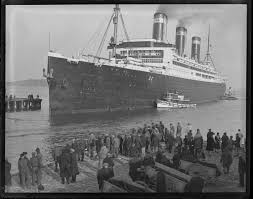Reworked and edited from an earlier post:
In researching for my story Here Lies a Soldier, I needed to educate myself on The Spanish Flu Epidemic: the plague that killed some 50 million people worldwide in 1918, more than 10 times the number killed by The Great War. I found an excellent book about the flu: Living With Enza -The Forgotten Story Of Britain and the Great Flu Pandemic Of 1918. The author, Mark Honigsbaum, has compiled and sifted through a huge amount of data to write this book. Here are some of the things I found interesting and frankly, horrifying.
Some facts about influenza:
Influenza viruses spread aerially, usually in small droplets expelled when someone coughs or sneezes, and tend to be more stable in cool dry conditions. Researchers have also discovered that at around 5 degrees C (41 degrees Fahrenheit) the virus transmits for about 2 days longer than at 20 degrees. A popular (and morbid) children’s rhyme of the time may actually be spot on. It goes like this:
I had a little bird
Its name was Enza
I opened the window
And in-flu-enza
The Spanish Flu in particular:
The Spanish Flu was so virulent because of its genetic makeup. There are 3 types of influenza viruses: A, B, and C. The B type produces classic winter flu while the C type rarely causes disease in humans. The A type, however, is the one responsible for the great pandemics of history. Because viruses are not cells, they do not have DNA to organize their replication. Rather, they use 8 delicate strands of RNA which codes for proteins and enzymes on the surface of the virus. Trouble arises during replication because the RNA cannot copy perfectly. Errors called ‘antigenic drift’ occur when the avian or swine strain of the virus is exchanging genes with the human host. The result is a new subtype of the virus. Then once inside the new host, the 8 strands of RNA randomly shuffle, generating an entirely new virus for which the human immune system has no antibodies. With no defense, the virus can spread like a wild-fire.
The rate of mortality fell disproportionally on young adults, usually the least vulnerable of a population. The 1918 flu struck suddenly and without warning. One moment a person was up and about, the next day they would be lying incapacitated, coughing up greenish-yellow sputum. The final stage came when their lungs filled with fluid, prompting the heart to leach oxygen from the head and feet, resulting in a dark purple staining across the lips and cheeks of the victim.

Possible contributing factors:
The effects of gas attacks during the war. Gasses like phosgene and chlorine were not only capable of disabling and killing on contact, they also acted as soil contaminants denying valuable ground to the enemy. In all, it is estimated that some 150,000 tons of poison gasses – the equivalent of a modern day supertanker – were dumped on the killing fields of Flanders and Northern France during the last 2 years of the war, saturating the soil to the point where it became impossible for attacking troops to hold territory without large numbers of men having to retreat to field hospitals with suppurating blisters, damaged lungs, and eyes.
The most mutagenic of all gasses – mustard gas – 12,000 tons of which was dumped on the Western Front in 1917, accounted for 400,000 casualties. According to John Oxford, Professor of virology at Queen Mary’s Medical School of London and military historian Douglas Gill: these agents may have prompted ‘stepwise mutational changes’ in the influenza virus. And in combination with the bitterly cold conditions that prevailed at the Western Front in the winter of 1917, and the stresses and strains of war, it is possible such contaminants would have lowered men’s resistance to the flu.
Though this particular strain of flu was traced to a United States Army barracks in Kansas (for more on that see Patient Zero: The Spanish Flu) it quickly spread all over North America and Europe. Some of it’s famous victims included: American President Woodrow Wilson, British Prime Minister David Lloyd George, German Kaiser Wilhelm II, Spain’s King Alfonso XIII, the future Emperor of Ethiopia Haile Selassie, artist Edvard Munch, and celebrities Walt Disney, Lilian Gish, and Mary Pickford.
Header Image: courtesy health dot.am



